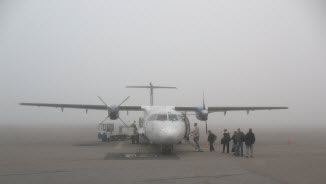2.2 Safety

The pilots' experience levels range from professional flight crews with thousands of hours to newly trained hobby fliers with less than 50 hours of flight time.
Despite the wide range of differences between aircraft types, pilot ratings, and experiences, all of the flights have several things in common. They all:
- Depart from an airport or other type of runway (takeoff)
- Arrive at an airport or other type of runway (land)
- Fly in the National Airspace System (NAS)
 Aircraft takeoffs and landings are the phases of flight during which aircraft are most vulnerable to mishap, due to close ground proximity and relatively poor maneuverability.
Aircraft takeoffs and landings are the phases of flight during which aircraft are most vulnerable to mishap, due to close ground proximity and relatively poor maneuverability.
A study conducted by Boeing shows that almost 50 percent of the fatal accidents by commercial jetliners between 2001 through 2010 occurred during the takeoff, initial climb, final approach, and landing phases of flight. Click here to view a graphic from the study.

Consequently, adverse weather conditions occurring during takeoff or landing increases the chances for an aircraft accident to occur.
Hence, forecast of weather conditions for an airport plays a major role in terms of safety and helping to prevent injuries or loss of life.
The TAF product is one method used to communicate expected weather conditions for airports to various customers and partners who rely on the information to make critical flight decisions.
Reduced ceilings and/or visibilities can severely reduce the capacity of an airport and lead to airborne or ground delays that result in diversions, cancellations, missed connections, and extra operational costs.
National Transportation Safety Board (NTSB) reports most commonly find human error to be the direct cause of accidents. Weather is a primary contributing factor in 23 percent of all aviation accidents.

